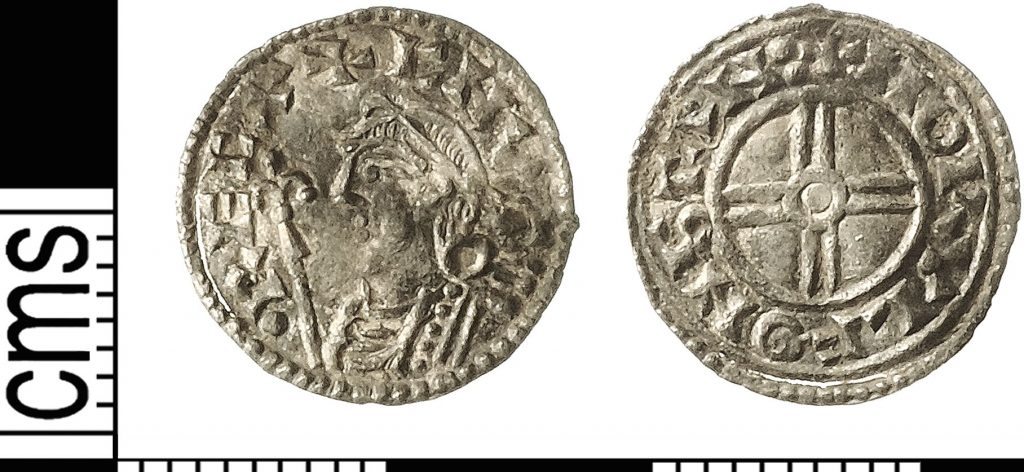In December 2014, Paul Coleman discovered a large hoard of 5,248 Anglo-Saxon coins. They were minted during the reign of two kings: Ethelred the Unready (reign.978-1016) and Canute (reign.1016-1035). They were preserved in very good shape because they were placed inside a lead container that was fragmented during excavation.
The coins were sent to the British Museum to be cleaned and examined. The experts said that this is the largest hoard ever discovered since the treasure act was passed by the parliament in 1996. A hoard this size is exceptional. When one of the experts at the local museum received an email telling him that a hoard of more than 5000 coins was discovered, he didn’t believe his eyes. He thought it is a typo. Maybe they meant 50 or 500. Even 500 is questionable because Anglo Saxon coins are not as common as Roman coins.
In November 2015, this hoard was declared a trove, which means, according to the treasure act, that museums can acquire these coins after buying them from the finder and the landowner where the discovery was made.
The treasure act started in 1996. It obliges anyone who finds a hoard to report it to the authorities within 14 days. After being excavated and examined, they will decide whether the hoard is a trove or not. If they declare it a treasure. The finder has to sell it to a local museum. The price will be estimated by an independent committee of experts. The finder and the landowner will share the money.
Coins must be at least 300 years old to be declared as a trove. There are other requirements as well. If they contain more than 10% gold or silver, the minimum number is two. If not, the hoard must contain at least 10 coins in order to qualify.
Anyone with an entry-level detector can make such finds. Since the beginning of the act, thousands of finds were reported, 1008 discoveries were reported in 2014 alone. In addition to the tools, you need to do some research about the history of the area you want to visit. Paul Coleman is a member of the Weekend Wanderers metal detecting club.
The club spent some time examining aerial photos of a field that had some odd shapes before scanning it with their metal detectors. There is also one important factor that is usually overlooked, which is luck. Since many people were gathered in the same area using detectors (which emit electromagnetic waves), there was interference. Paul’s machine couldn’t perform the way it should be and it was emitting false signals. So he decided to scan an area close to the field designated by the club. And, there, he made his life-changing find!
About the Author:
Article by guest author Alex Lemaire, he is passionate about unearthing history and collecting coins and relics. He thinks that metal detectors are time machines that help us know more about our ancestors’ lifestyle. You can follow him on his blog https://metaldetectorplanet.com/


